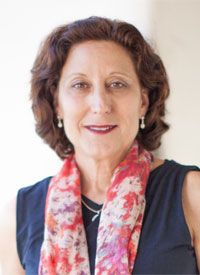Driver Mutations Prognostic, Not Predictive in Breast Cancer
Tumor genome profiling identifies driver mutations in breast tumors, however, it is still too early to use this information in clinical decision making, according to Hope S. Rugo, MD.
Hope Rugo, MD, professor of Medicine and director of Breast Oncology and Clinical Trials Education at the University of California, San Francisco

Hope Rugo, MD
Tumor genome profiling identifies driver mutations in breast tumors, however, it is still too early to use this information in clinical decision making, according to Hope S. Rugo, MD. Rugo spoke at the Miami Breast Cancer Conference.
“The role of next-generation sequencing remains unclear, and I feel it should be primarily a research tool,” said Rugo, professor of Medicine and director of Breast Oncology and Clinical Trials Education at the University of California San Francisco Helen Diller Family Comprehensive Cancer Center.
Rugo said that for most patients, the clinical value of targeting specific markers has proven to be uncertain and at this point, does not seem to justify the risks.
“Having patients have toxicity as well as cost with unclear benefit is really an ethical dilemma,” said Rugo.
Rugo described the sequencing results from a FoundationOne genomic test to illustrate the gap between the prognostic and the predictive science.
The results included data on genomic alterations in 1445 invasive breast cancers. As expected, the most common mutations wereTP53andPI3K.
“TP53mutations were seen in 60% of these cancers, but we don’t have anything to target those cancers with. [At this point] getting that information doesn’t help you in managing your patient,” said Rugo.
She described a similar situation withPI3K. “ThePI3Kmutation was seen in 30% of these patients, but we don’t yet know if that predicts benefit from specific available therapies.”
Data from completed prospective trials, including CLEOPATRA, BOLERO-2, and NeoSphere, have not provided clarity, Rugo noted, because they have failed to identify predictive markers.
She specifically discussed CLEOPATRA, which demonstrated a dramatic frontline survival benefit with the pertuzumab/trastuzumab dual-HER2 blockade in women with HER2-positive metastatic breast cancer.
A biomarker analysis focusing onPIK3CAmutations in patients enrolled in CLEOPATRA was performed. According to Rugo, “PIK3CAmutations were not associated with resistance to pertuzumab, because patients derived similar additional benefit independent ofPIK3CAmutational status.”
She noted that other studies of HER2-targeted therapies have shown similar results, as well as trials of treatments targeting mTOR andPI3Kin patients with HR-positive breast cancer.
“We have prognostic ability, but not predictive ability,” said Rugo. “So far, we have failed to identify predictive markers so we have to be cautious about using this in the clinical setting.”
In assessing the information that is currently available in the genome-sequencing arena, Rugo said N of 1 case reports have been “encouraging.” However, although the reports show that “maybe we’re going to get somewhere in the future,” Rugo said, “it doesn’t tell us what to do with our patient who is sitting across the table with a progressing, chemotherapy-resistant, triple-negative breast cancer.”
Researchers hope that biomarker breakthroughs and further genomic lessons will come with ongoing and planned research.
“There are a number of trials screening patients for particular mutations and then enrolling them in novel agent trials,” said Rugo.
As an example, she described a phase II study of the VEGFR-FGFR inhibitor lucitanib that is only enrolling patients withFGFR1-amplification (NCT02053636).
Rugo said that, unfortunately, these studies that are exclusively enrolling mutation-positive subpopulations may not really offer any clarity in terms of the true value of a therapy.
“The question is, if you only treat the patients who have the mutation and you see a response, have you shown anything? Because you don’t know how the patients who didn’t have a mutation would do, and they may do just as well.”
Rugo is hoping ongoing “basket trials” and large collaborative programs will offer additional clarity, including SAFIR, Aurora, and I-SPY.
Other strategies that she hopes will enhance the value of genomic sequencing include looking at panels of genes rather than single-gene mutations, using circulating DNA to screen for genomic alterations, and the development of avatar tumor grafts.